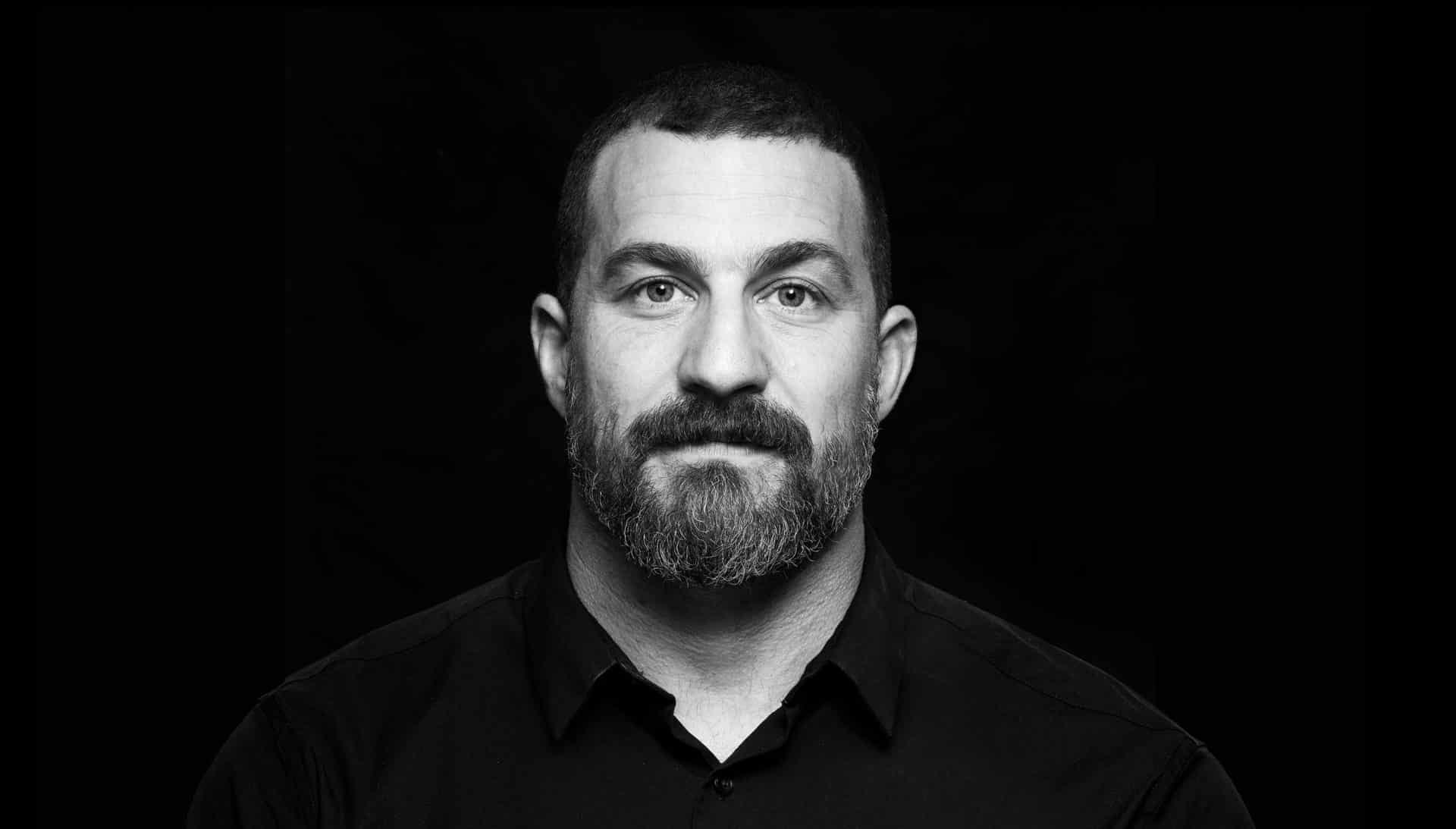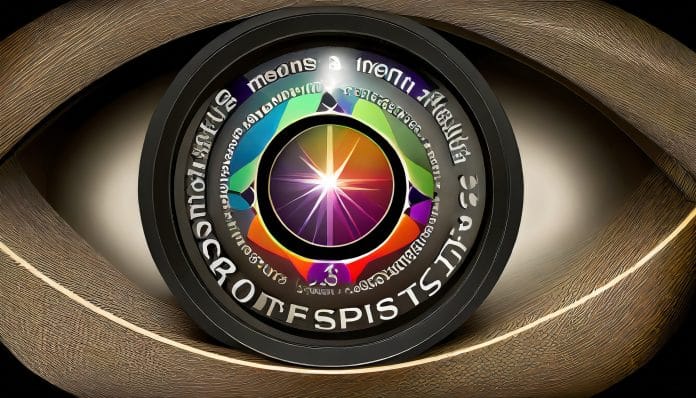For the longest time, I didn’t necessarily register this was there – more – I attributed it to whatever was happening at the time, not realising I was essentially seeing everything through ‘anxiety tinted glasses’.
Yes, stress can certainly be sneaky. It’s often credited as a mere byproduct of life’s many tribulations rather than an oppressive force. If you’re not vigilant, you might begin to view the world through a lens of perpetual stress, impairing your ability to accurately perceive, react, and interact with your surroundings.
The kicker is, this is not simply ‘something in my head’ – it results in a physical manifestation in the form of tight muscles and a perpetual state of ‘flight or fight’ where the Automic Nervous System is on high alert, ready to respond to a threat that may doesn’t exist.
Over the years, I have always sought ways to manage this – understanding that something was happening, even though I wasn’t entirely sure why.
Introducing the Autonomic Nervous System
The autonomic nervous system (ANS) is the body’s “automatic” control system. It quietly operates in the background, regulating vital functions such as heart rate, digestion, respiratory rate, pupillary response, and more. The ANS comprises two essential parts – the sympathetic and parasympathetic nervous systems – critical to maintaining internal balance or homeostasis.
While the sympathetic nervous system prepares the body for high-intensity ‘fight or flight’ situations, the parasympathetic system is associated with rest, relaxation and ‘feed or breed’ activities. Simply put, one stimulates while the other calms.
Knowing this, it’s unsurprising that striking the right balance between our internal system’s ‘accelerator’ and ‘brake’ can hugely impact our overall well-being. Luckily for us, pioneering work by neuroscientists like Andrew Huberman provides us with straightforward techniques to take charge of our own ANS regulation.
Critical Functions of the Autonomic Nervous System
- Heart Rate: The ANS regulates the beating of our heart, speeding it up or slowing it down as necessary.
- Respiration: ANS also controls our breathing – both the rate and depth of our breaths.
- Digestion: ANS is in charge of the entire digestive process, from food movement through the digestive tract to the production of enzymes.
- Body Temperature: By causing sweat production or triggering shivering, ANS helps maintain an optimal body temperature.
With this better understanding of the autonomic nervous system, we can see the importance of managing it effectively for our overall health and well-being. Let’s now explore some of the techniques developed by Huberman for autonomic nervous system regulation.

Andrew Huberman’s Insights: A Glimpse into Autonomic Nervous System Regulation
Andrew Huberman, a distinguished neuroscientist I have been following for a while now, provides a wealth of information on better understanding and managing our autonomic nervous system (ANS). As his research suggests, applying simple techniques can foster better control over our body’s automatic responses, improving overall well-being and mental health.
Huberman’s Key Findings on the Autonomic Nervous System
We will focus on two of Huberman’s main techniques: the physiological signs and the conscious control of eyesight. These methods are not only scientifically backed but are also simple, accessible, and can be applied by anyone at any time.
The Physiological Sigh: This naturally occurring process helps reset our breathing rate and pattern, contributing to internal calming when executed consciously. It consists of two consecutive deep inhalations and an extended, slow exhalation.
The Power of Eyesight: Additionally, Huberman’s research highlights the relationship between vision focus and levels of alertness. Focusing the eyesight at a distant point activates the ‘rest and digest’ mode, whereas focusing on a point nearby stimulates the ‘fight or flight’ mode. Directly controlling our visual focus is a powerful tool to navigate our alertness and mood states.
The science supporting these techniques indeed verifies their efficacy. For instance, Huberman posits that the physiological sigh is naturally triggered by high amounts of carbon dioxide in your lungs – a likely scenario during distress or anxiety. By consciously applying this pattern of breathing, we can decrease feelings of nervousness or panic.
As for eyesight, the dilation of our pupils in response to events perceived as threatening triggers our body’s sympathetic (‘fight or flight’) reaction. Conversely, allowing the eyes to relax and focus on something distant can instigate the parasympathetic (‘rest and digest’) response.

Harnessing the Physiological Sigh: A Simple Technique for Autonomic Nervous System Control
One of the most impactful yet accessible techniques to regulate your autonomic nervous system is the physiological sign. As elucidated by Andrew Huberman, the physiological sigh is a natural process that our bodies often perform unconsciously, especially during high stress or anxiety.
What is a Physiological Sigh?
A physiological sigh is a breathing pattern characterised by two short and quick successive inhalations, followed by a longer, deeper exhalation. If you’ve ever observed a dog or baby while they’re sleeping, you may have noticed this very pattern. That’s a physiological sigh! There’s a reason our bodies naturally resort to this pattern, as you’ll soon discover.
How Does a Physiological Sigh Work?
The physiological sign is not only simple but it’s also based on a powerful biological principle. The magic lies in a surprising function of our lungs, involving special little sacs called alveoli.
Imagine countless miniature balloons filling up your lungs; these are the alveoli. Their primary function is to exchange oxygen and carbon dioxide between the bloodstream and the air we breathe. Stress or anxiety can cause these balloons to collapse partially or entirely, leading to a feeling of breathlessness or tightness in the chest.
Here’s where the physiological sigh comes into play: it stimulates these tiny alveoli into opening up, re-establishing their vital role in our breathing process.
How to Master the Physiological Sigh
Let’s break down how to implement this elusive physiological sigh into your daily routine:
- Begin by taking a swift, deep inhalation through your nose. Make it as deep as you can without it feeling uncomfortable.
- Without exhaling, immediately take another swift, deep inhalation.
- Now, let out a long, exhaling sigh through your mouth. This exhalation ought to feel automatic and bring relief. You should feel slightly light-headed due to the extra oxygen.
Note: This process can be repeated up to about five times in one hour, but ensure you don’t overdo it, as over-oxygenation can sometimes lead to dizziness.
I find myself consciously doing the Physiological Sigh throughout the day at moments of stress and anxiety.
For example:
- When I find myself feeling anxious about a thought or series of ideas in my head
- When about to deal with a demanding customer
- In between rolling at Jiu Jitsu
I have found, as I have consciously developed this practice more, that I have also started to do it reflectively as well. Often now, as levels of anxiety arise, I also find myself quickly catching a few sighs – I am training my body to be more aware of rising levels and actively manage them!

Eyesight Matters: Exploring the Connection between Vision and Autonomic Nervous System Regulation
Eyes are far more than just windows to the soul. They are sophisticated instruments crucial in managing and controlling our autonomic nervous system. Andrew Huberman highlights the primarily overlooked but essential connection between vision and the autonomic nervous system.
Seeing Near versus Far: The Huberman Technique
In Huberman’s studies, he accentuates a fascinating concept: the diverse impacts of looking near and far on our bodies. Simply put, our vision and what we focus on can change the state of our autonomic nervous system. This transformative information opens a new horizon to regulating our nervous system through eyesight.
While ‘seeing near’ is tied to higher engagement and arousal responses (activating the sympathetic nervous system), ‘looking far’ promotes relaxation and calmness (starting the parasympathetic nervous system). These changes result in mental shifts and physiological alterations, including heart rate and breathing patterns. It makes sense. Threats often require narrow focus (a predator emerges, and you want to keep track of it), while wide eyesight means fewer immediate threats are likely to present. You get a literal and metaphorical ‘wider view’ of the situation.
Techniques for Eyesight Regulation
One of the most straightforward and powerful tools for eyesight regulation we can learn from Huberman -is the art of ‘defocusing’ or ‘softening’ our gaze to stimulate relaxation. We effectively encourage the parasympathetic nervous system when we soften our gaze rather than intensely focus. This simple yet profound practice can instantly incite a sense of calm and relaxation and could be easily incorporated into daily life.
Conversely, for moments when increased focus and alertness are required, intentionally ‘narrowing’ our vision or focusing on specific details can evoke the necessary mental state. It’s essentially ‘zooming in’, activating the sympathetic nervous system, and preparing our body to respond to immediate demands.
Putting the Theory into Practice
All the above sounds scientific, and how does it translate to real-world scenarios? Well, that’s the beauty of these techniques – they’re easily applicable. For instance, consider looking out of a window at the broad horizon when feeling overwhelmed. This simple act can decrease anxiety and initiate calm. Alternatively, in a situation requiring your full attention, intentionally refocus your eyes to see the intricate details of the task, stimulating focus and alertness.
Thus, this profound correlation between vision and autonomic nervous system regulation unravels a treasure of possibilities, empowering us to impact our physiological responses using nothing more than our eyesight. With these insights from Andrew Huberman, we can adopt a simple yet powerful tool in our daily lives to manage and control our autonomic nervous system effectively.
One place this works well is during a Jiu-Jitsu roll. As anyone involved in this intense sport will know, getting crushed by an opponent quickly raises levels of stress in the system, and a stressed body means a tight body, which is not what we are after.
But taking a moment when in guard or flattened out under someone – to relax the eyesight and let it ‘go wide’ I find it helps me gather my facilities, stop panicking (as much) and then refocus back onto what I need to do to improve my situation.

Finding Balance: Incorporating Andrew Huberman’s Techniques into Your Daily Routine
Andrew Huberman’s acclaimed techniques – The Physiological Sigh and Eyesight Regulation – have paved the way to a new form of autonomic nervous system control – tools anyone can utilise with just a bit of practice. You can incorporate these methods into your everyday life with consistency and patience, achieving better stress management and overall wellness. Here’s how to get started:
Step 1: Start the Day with a Physiological Sigh
Begin your day with two deep, deliberate physiological sighs, which will make your nervous system calm and relaxed. Not only does the physiological sigh work as a reset button, but it is also an effective tool for managing occasional stress or anxiety throughout the day. Make a habit of this first thing in the morning to set the tone for the day ahead.
Step 2: Implement Eyesight Regulation Techniques
Turn to the Huberman’s Eyesight Regulation throughout your day. These techniques are instrumental during work hours, especially if you spend long intervals in front of digital screens. When taking a break, spend a few minutes looking at objects at varying distances. This simple exercise helps reset the autonomic nervous system, reducing potential strain and promoting a balanced state of attentiveness and relaxation.
Step 3: Repeat and Practice
Like any new habit, take time to familiarise yourself with these techniques. Consistent practice is critical in mastering these methods and reaping their benefits. We naturally utilise these functions without thinking, but bringing awareness improves control over our nervous system.
Implementing these practices can be simple and should be okay with your daily routine. The simplicity of these methods is their best attribute – they are there when you need them, a tool you can utilise at any time of the day.
Step 4: Reflect, Adjust and Personalise
At the end of the day, how you implement these techniques is down to personal preference and lifestyle. What works best for one person might only work for one person. Reflect on your experiences, make adjustments, and make these techniques work for you. The ultimate goal is to achieve a balanced and healthier autonomic nervous system.
Incorporating these techniques can significantly impact your well-being and improve daily life. And remember, as with any change to your routine or lifestyle, patience and consistency are key. Soon, these revolutionary techniques of Andrew Huberman will become second nature to you.
Balance is not something you find. It’s something you create.

About Andrew Huberman
I am a bit of a fanboy when it comes to Andrew Huberman. As terrible as this term is, I consider him the ‘Thinking Mans Joe Rogan’ – embracing many facets of modern masculinity but with an extreme focus on science and science-backed methodologies.
Surprisingly, he also underpins this with a body covered in tattoos and a background in skateboarding and punk rock music.
Two recent podcasts featuring him provide an excellent insight into the man and where he has come from:
Lift, Run, Shoot with Cameron Haines – This interview probably introduced Andrew Huberman’s Beastmode. I have been watching Huberman’s shows for nearly a year – and while he has in the past mentioned his tattoos in passing – intentionally choosing not to discuss them for fear of distraction from his core focus on the science and techniques he discusses – his decision to pick up a heavy rock and walk it to the top of a mountain with Cameron Haynes, really just underpinned why I have enjoyed watching and learning from this quietly spoken, but confident, knowledgeable man. As it turns out, he’s quite the unit physically as well.
Tim Ferris’ podcast (number 708) featured Andrew Huberman for a repeat visit – and this podcast was phenomenal listening for me – learning more about Andrews’s history and struggles essentially highlighted for me the ability for anyone to make a decision and recreate themselves. A message I needed to hear. His candidness about tackling personal hurdles underscores the universality of trials and tribulations. Continuous learning, resilience and courage were pivotal in his journey. Andrew’s real-life narrative brings to light the transformative power of the human spirit, proving that it’s never too late to reshape one’s life. His dedication to exploring and demystifying the autonomic nervous system gives us the tools to take control of our well-being, something truly inspiring for anyone, irrespective of their personal experience. This interview didn’t just underline the importance of his work but also motivated us to integrate these invaluable techniques into our daily lives.
Follow his work over here – https://www.hubermanlab.com/

